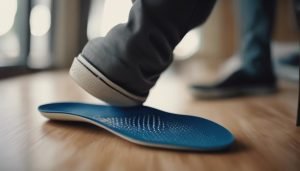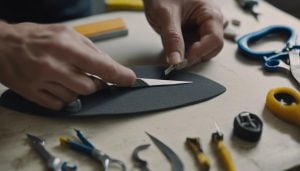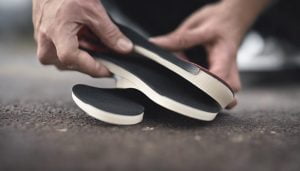This post contains affiliate links. As an Amazon Associate, we earn from qualifying purchases.
The insole of a shoe serves as a fundamental element in footwear, playing a pivotal role in enhancing comfort and supporting the feet during daily activities. Understanding the composition and function of the insole is essential for anyone seeking to optimize their footwear experience.
Exploring the intricacies of insoles, such as the materials used, benefits offered, and selection criteria, can shed light on the significance of this seemingly simple yet indispensable component.
Let's delve into the world of shoe insoles to uncover their impact on foot health and overall well-being.
Key Takeaways
- Insoles provide cushioning, support, and shock absorption for improved foot comfort.
- They maintain proper foot alignment, alleviate pressure points, and distribute weight evenly.
- Quality insoles reduce strain on feet, ankles, and knees while enhancing stability.
- Proper care and maintenance of insoles ensure longevity, hygiene, and continued support.
Definition and Function of Insoles
Insoles, also referred to as footbeds or inner soles, play a crucial role in providing cushioning, support, and shock absorption within shoes. These components are essential for maintaining proper foot alignment, especially the arch, to prevent pain and discomfort while enhancing overall comfort.
Insoles offer targeted support to alleviate pressure points, distribute weight evenly, and reduce strain on the feet, ankles, and knees. By providing additional cushioning, insoles can absorb impact forces generated with each step, reducing the risk of injuries and fatigue.
Properly selected insoles can significantly improve shoe fit, alleviate foot pain, enhance stability, and promote better posture, ultimately contributing to enhanced foot health and overall well-being.
Materials Used in Insole Construction
Various materials are utilized in the construction of insoles to cater to diverse preferences for comfort and support levels. Foam insoles are cost-effective and excel in shock absorption. Gel insoles provide pain relief and prevent loose heels with enhanced grip. Memory foam insoles offer custom comfort by molding to the foot's shape and ensuring durability. Air cushioning insoles feature pressurized air bubbles for maximum cushioning during wear. Leather insoles, crafted from cowhide, provide robust arch support and longevity. Each material serves a specific purpose, from shock absorption to arch support, meeting the unique needs of individuals seeking comfort and support in their footwear.
| Material | Key Features | Benefits |
|---|---|---|
| Foam insoles | Cost-effective, shock absorption | Affordable comfort |
| Gel insoles | Pain relief, grip for loose heels | Enhanced comfort and stability |
| Memory foam | Customized comfort, durability | Personalized support and longevity |
| Air cushioning | Maximum cushioning during wear | Superior comfort underfoot |
| Leather insoles | Arch support, durability | Sturdy support for long-lasting use |
Benefits of Using Quality Insoles
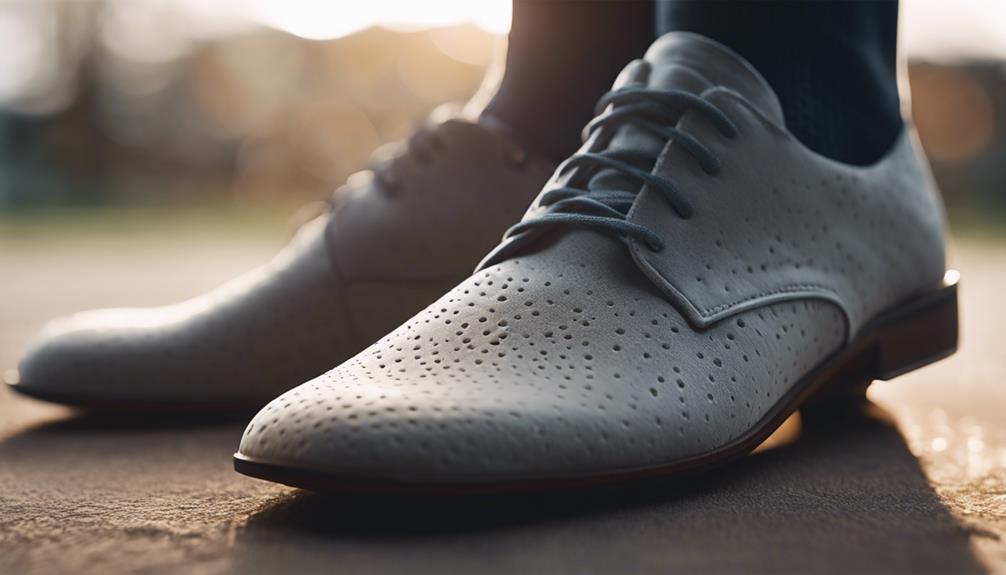
When considering footwear comfort and foot health, the utilization of quality insoles plays a crucial role in providing essential support and cushioning.
Quality insoles, such as Comfort Insoles, offer benefits like shock absorption, weight distribution, and arch support, which can significantly reduce foot pain and help prevent issues like plantar fasciitis. These insoles provide better support than regular shoe inserts, improving overall shoe comfort by evenly distributing weight and offering cushioning for long-lasting support.
How to Select the Right Insole
When aiming to select the right insole, it's essential to prioritize factors such as arch support, cushioning, and material to ensure optimal foot comfort and support.
To choose the right insole, consider the following:
- Identify Your Arch Type: For individuals with high arches, opt for insoles specifically designed to provide extra support.
- Select the Right Material: Look for orthotic insoles made from high-quality materials that offer both cushioning and durability.
- Customize for Your Feet: Consider getting foot beds or customizable insoles that can be tailored to your foot shape for a personalized fit.
- Seek Targeted Support: If you have specific foot issues like plantar fasciitis, prioritize support insoles designed to alleviate these conditions effectively.
Maintenance Tips for Shoe Insoles
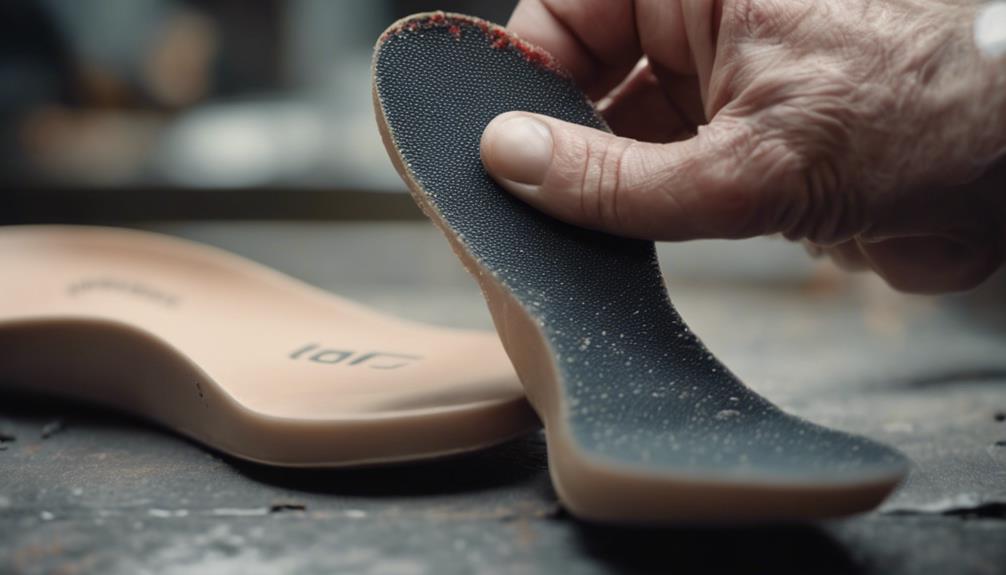
To ensure longevity and optimal performance of your shoe insoles, implementing proper maintenance practices is crucial.
Insoles made from various materials such as gel, foam, or leather require regular cleaning with mild soap and water to prevent odor buildup and maintain freshness. Air out the insoles after use to prevent bacterial growth by allowing moisture to evaporate.
It is essential to replace the insoles periodically based on wear and tear to continue providing support and cushioning, especially in the ball of the foot area. Storing the insoles in a dry, well-ventilated area helps maintain their shape and effectiveness.
Consider rotating multiple pairs of insoles to extend their lifespan and prevent overuse, ensuring continued pain relief and comfort in shoes of the correct size.
Frequently Asked Questions
What Part of the Shoe Is the Insole?
The insole of a shoe, also known as the footbed, is a crucial component that provides cushioning and support for the foot. It is situated inside the shoe, directly beneath the foot, enhancing comfort and overall foot health.
What Is an Insole?
An insole is an essential component of footwear designed to provide cushioning, support, and shock absorption for the foot. It improves comfort, fit, and foot health by offering padding and structure tailored to individual needs.
How Do You Measure the Insole of a Shoe?
To measure the insole of a shoe accurately, remove the existing insole and lay it flat. Measure the length from the heel to the tip of the toe and the width at the widest part. Use these measurements to select the right replacement insole size.
Is It OK to Wear Shoes Without Insoles?
It is generally not advisable to wear shoes without insoles as they can lead to discomfort, lack of support, and potential foot problems. Insoles help cushion the foot, provide arch support, distribute weight evenly, and enhance overall foot health.
Conclusion
Insoles play a crucial role in providing support, comfort, and stability for the feet. By selecting the right material and maintaining them properly, individuals can enhance their overall foot health and prevent injuries. Investing in quality insoles can make a significant difference in the comfort and longevity of your shoes, ultimately benefiting your posture and overall well-being.

